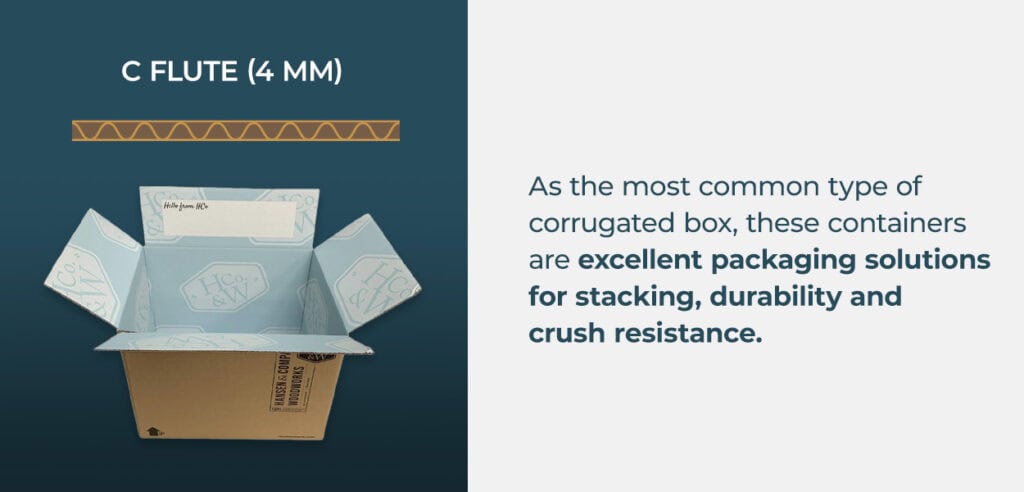
Understanding the types of corrugated material flutes and corrugated board styles is essential for selecting the best product packaging solution. When it comes to packaging products for shipping or transportation, choosing the right material is crucial.
The material flute is the corrugated or curved section between the two liners. By varying the size and shape of the flutes, manufacturers can achieve different performance characteristics in the cardboard. For example, very fine flutes, denoted as “E” material flutes, are used to manufacture lightweight retail cartons. A more coarse material flute like an “A” or “B,” on the other hand, is most often used for transit packaging.
Using double-walled material, manufacturers can combine one or more flutes to create a grade, such as an “EB” or “BC” flute. Combining one or more material flutes can have several purposes, including improving the outer appearance of a printing surface and creating a rigid structure that’s perfect for more substantial items.
Material flutes are most often manufactured from fully recycled waste-based fluting (WBF), but they can also be constructed from semi-chem (SC) fluting material.

Corrugated cardboard comes in various styles, each designed to meet specific packaging requirements. Choosing the right corrugated board style, as well as the appropriate flute size, allows you to create custom boxes tailored to the needs of different products.
The types of corrugated board styles are:
While cardboard boxes are commonly used for packaging small items — think cereal boxes — corrugated boxes are used to transport heavier objects. A corrugated box is a packaging container made from corrugated cardboard, which consists of a fluted (wavy) layer sandwiched between two flat liner boards. This unique structure provides excellent strength and cushioning properties, making it ideal for packaging and transporting heavy or fragile objects.
The flutes contribute to the box’s overall strength and can affect its performance, weight and cost. The corrugated board style also significantly affects its strength and suitability for specific applications. Knowing the difference between various flutes and board styles will help you decide which cardboard thickness and style is best for your custom box.
If you’re interested in learning more about the types of corrugated box material fluting choices and board styles that will work best for your product, feel free to reach out to our team of designers at Bolt Boxes.
For more than 60 years, Bolt Boxes has been committed to helping our clients take their branding efforts to the next level with custom packaging. With industry-leading lead times, exceptional print capabilities, G7 Master certification, ISO 9001:2015 certification and a team of structural design experts under one roof, we are your go-to partner for custom packaging solutions.
Choose from various custom mailing boxes, including C-series, end-loading boxes and standard RSC packages for your product line. You can also browse our work — which showcases various printing capabilities — for inspiration on which corrugated mailing box is right for you.